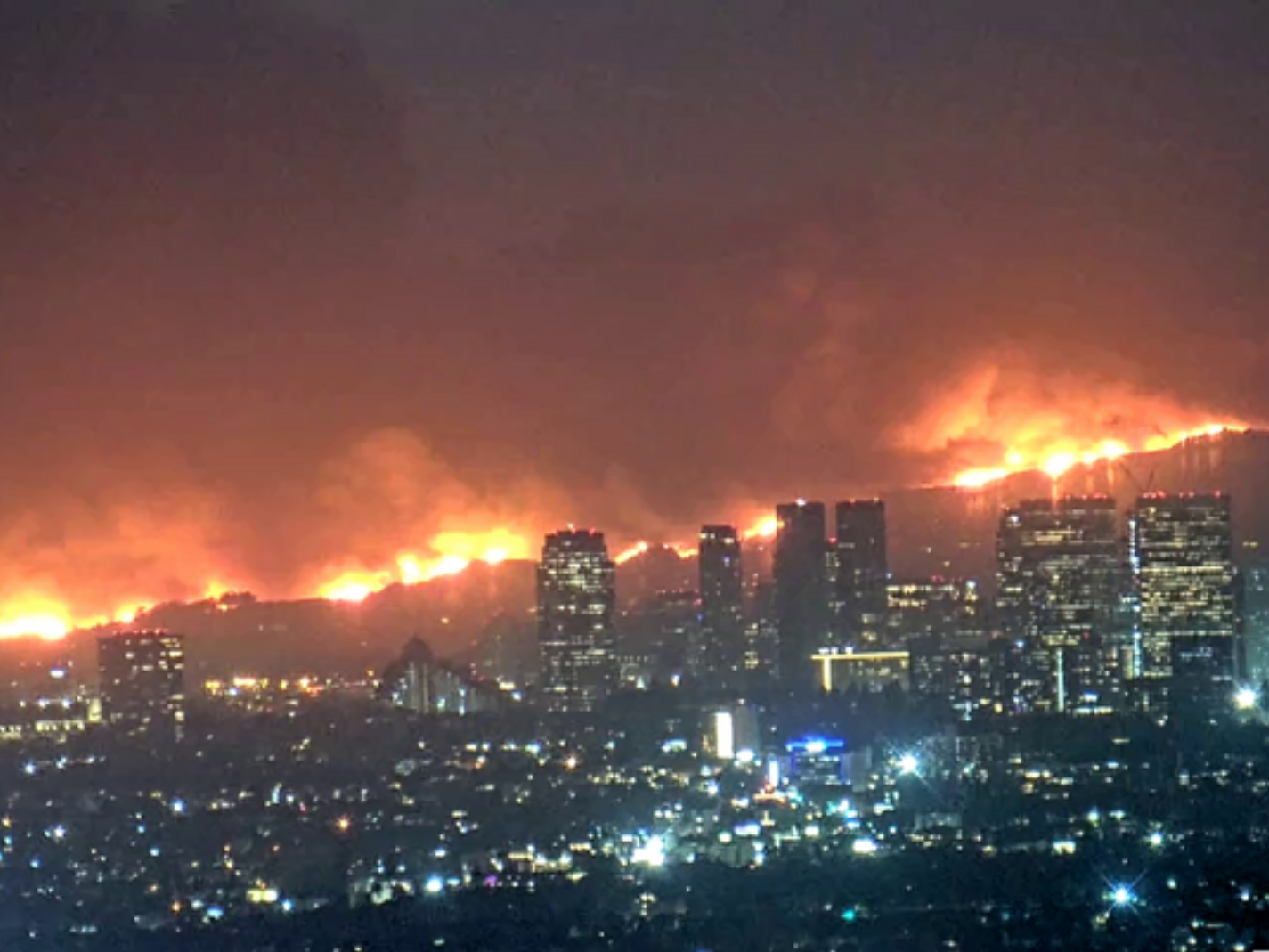
“Diversity, equity, and inclusion” (DEI) has been in the headlines quite a bit lately, and not for good reasons.
Indeed, we may be witnessing the collapse of the entire toxic ideology and not a moment too soon. Its effect on society has been devastating, leading to a noticeable decline in professionalism and public trust.
For example, when out-of-control wildfires ravaged Los Angeles in early January, many commentators, including my colleague Prof. Nick Giordano, observed that the tragedy was due, in part, to the fact that “nearly every government official in California has made DEI the priority.”
Instead of basing their hiring and promotion decisions on demonstrated ability—aka, competence—officials in Los Angeles had for years based those decisions on factors like race, sex, and gender identity. That led to the kind of gross incompetence we all witnessed on national TV, where a bad situation became much worse than if competent people had been at the helm.
[RELATED: The Decline in American Universities, 2011-2024]
It’s not that blacks or women can’t be good firefighters or administrators. (Although, personally, I have some reservations about female firefighters that were not assuaged by the viral video of a Los Angeles assistant fire chief arguing that her inability to carry an unconscious man out of a burning building was acceptable because “he got himself in the wrong place.” But let’s give them the benefit of the doubt for a moment).
The point is simply that if you hire or promote based on competence, you are more likely to get competence. If you hire and promote for any other reason, you are much less likely to get competence.
Similar questions arose last week, in even more dramatic fashion, following the tragic collision of an Army helicopter and a commercial airliner over Washington, DC. To be fair, although President Trump speculated publicly that DEI might be partly to blame, we’re not yet sure what caused the crash. It does appear that mistakes were made by the control tower and perhaps by the Army pilots, but again, we don’t know for certain.
What we do know is that the Federal Aviation Administration (FAA) has been promoting DEI for years. According to the Washington Times, in 2022, the agency dropped its rigorous competency exam for prospective air traffic controllers and replaced it with a “biographical questionnaire.” That led 11 Republican attorneys general in 2024 to accuse FAA Administrator Michael Whitaker of “prioritize[ing] virtue-signaling ‘diversity’ efforts over aviation expertise.”
And therein lies the essential problem with the entire DEI regime: It’s not just that putting diversity before merit lowers the standards for minority candidates; it’s that it lowers the standards for everyone.
That is certainly as true in higher education as it is anywhere else in society, perhaps more so.
Indeed, as Giordano points out, the noxious DEI ideology that has wrought such destruction nationwide has its roots in academia. Colleges and universities have been lowering their entrance requirements and watering down the curriculum for decades. The inevitable result is a dumber society, where, according to recent surveys of employers, college graduates can no longer write, compute, or think at the level once expected of them.
The problem even extends to graduate and professional education.
As Heather Mac Donald documents in her book, When Race Trumps Merit, medical schools have long admitted black students with lower undergraduate GPAs and MCAT scores than their white or Asian counterparts.
Once students are on campus, it becomes more difficult to enforce an obvious double standard. You can’t say, “White and Asian students need an 80 to pass this exam, but black students only have to get a 70.” So, how do you make sure as many students as possible get through, including those admitted with subpar credentials? You either lower the score for a passing grade—for ALL students—or you dumb down the test. The upshot, after four years, is a graduating class of MDs who know less than their predecessors.
[RELATED: My Surgeon Might be a Diversity Hire!]
Again, the point is not that blacks can’t succeed in medical school—they can. As Mac Donald also notes, black students with comparable scores do just as well as whites and Asians. It’s not about race; it’s about ability. When we treat students with less ability just like those with more, the result is an inevitable lowering of standards that benefits no one.
There are some indications that the situation may be improving, with President Trump’s recent Executive Orders targeting DEI in the government even as many corporations and even some higher education institutions back away from it. But DEI won’t end overnight, and the effects of lower standards will be felt for years to come.
Meanwhile, conservatives in academia and elsewhere must continue to push back while also holding themselves to a higher standard. Because ultimately, no one else’s expectations of you should be greater than your own.
Follow Rob Jenkins on X.
Image of Palisades Fire from Downtown by Toastt21 on Wikimedia Commons

It’s more than just this — it’s also a culture that punishes initiative and rewards doing nothing, as you can’t get into trouble if you don’t do *anything* and wait for instructions in an emergency.
Take, for example, the use of salt water to fight fires. It works (I’ve seen it used) and arguably better because it has a higher boiling temperature and hence absorbs more heat while still liquid (and absorbing heat is the primary way that water puts out fires).
And they had a whole ocean full of it to use…
The combined ports of LA & Longbeach have a total of three large fireboats and four small ones that are more platforms for rescue divers. But the three big ones can pump a LOT of water which they can either spray themselves (a couple hundred feet up and a couple hundred downrange (including ashore) or they can run it through hoses to feed fire trucks ashore — that is designed to help fight pier fires, but feeding water to a fire truck is independent of where the fire truck (pumper) then sends it.
And if a fire truck can get within 20 feet of a body of water, it can draft the water itself. That’s what the two thick rubber hoses on the side of the truck are for, and it’s routinely done in rural areas without hydrants. People have “fire ponds” explicitly for this purpose.
Sure the salt water will corrode the pumps — if you don’t rinse the trucks out afterwards, and even if you break equipment fighting a conflagration, that’s an acceptable loss. (The radiant heat from fires often cooks the paint off fire trucks, it’s an acceptable loss.) And salt water isn’t good for the ecosystem, but fire is a lot worse…
The fire trucks can only go 13 knots (15 MPH), but it was only 30 miles (2 hours) to where the multi-million dollar beachfront houses were burning — they could have been there and saved all those houses themselves. Half the fire trucks were out of service — but how many of those could still be driven and used to pump water (having each pumper feeding the next, you can “relay” water as far as you need to, as long as you have enough trucks)
And then you have mutual aid — and after a week, the NYFD could have been there…
And “watch this gauge and blow the truck’s air horn if it gets out of the green” is a task that can be delegated to any competent adult in an emergency. Close your beaches and have your lifeguards do it if nothing else…
When Maine burned in 1947, they were using septic tank pumpers to haul water. California has a major dairy industry, milk trucks can haul water — but that gets outside the concept of a regulated & unionized bureaucracy. When the wind switched and the flames approached Bar Harbor in 1947, it was evacuated by lobster boats that went straight out to sea because there was no place else to go — no one cared that their clothes wound up soaked in bait juice. Or that no government bureaucrat was supervising.
This is the “Cowboy Mentality” that America used to be famous for. It’s how we defeated a better trained and better equipped German army in WWII — Rommel reportedly said “combat is chaos, but the Americans like chaos.”
In addition to everything else, Affirmative Retribution and DEI have eliminated the risk taking and initiative that is essential in emergencies.